
The Art of Gil Elvgren (Part Two)
In our first part onthe art of Gil Elvgren , we stopped when the painter arrived at Brown and Bigelow...
Elvgren's arrangement with Brown and Bigelow gave him the freedom to continue doing magazine illustrations and advertising for Coca-Cola. In fact, he could take any other advertising job as long as it did not conflict with his work for Brown and Bigelow. The year 1945 therefore marked a turning point in Elvgren's long career: the Brown and Bigelow affair marked the beginning of his most important phase, which would last more than thirty years.
The works of Gil Elvgren at Brown and Bieglow
Charlie Ward , president of Brown and Bigelow and the man who had persuaded Elvgren to join the company, was a fun-loving, "living hard, playing hard, enjoying life" type. The two men quickly established a good relationship, and Charlie Ward told Elvgren that he intended to commercialize the artist's name and work, as it had never been commercialized before. Keeping his promise, Ward introduced Elvgren to the company's sales staff and national customer base with all the fanfare such a star deserved.
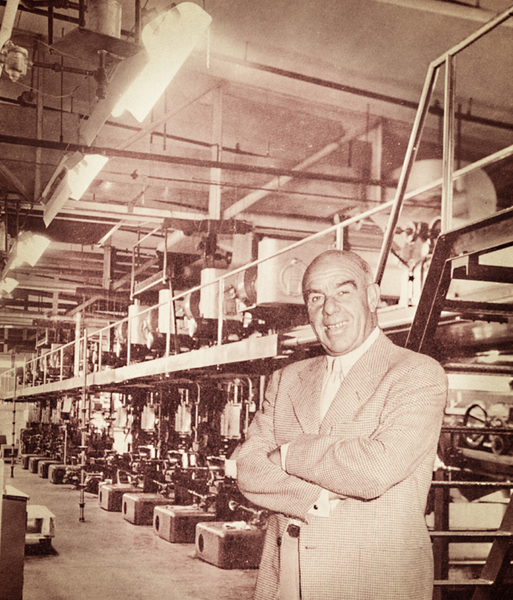
Charles Ward
During Elvgren's first month of work with Brown and Bigelow in 1945 (working for the publication in 1946), the management offices learned that Ward had specifically requested from his new artist a nude pin-up for the 1946 line Enthusiastically accepting the assignment, as he wanted to please Ward by producing a successful calendar painting, Elvgren painted a work measuring 91.4 x 76.2 cm (36" x 30"), the largest painting of naked that he has ever achieved. Gay Nymph depicted a beautiful nude blonde lounging on a beach in blue-violet moonlight and surrounded by exquisite lilacs.

Gay Nymph (1946)
The following year, Ward again wanted a nude painting of Elvgren. Vision of Beauty was an immediate success, matching the sales figures of Gay Nymph, which itself had set a record for Brown and Bigelow's nude paintings. Vision of Beauty was a much more conservative, almost artistic nude painting in an interior setting.
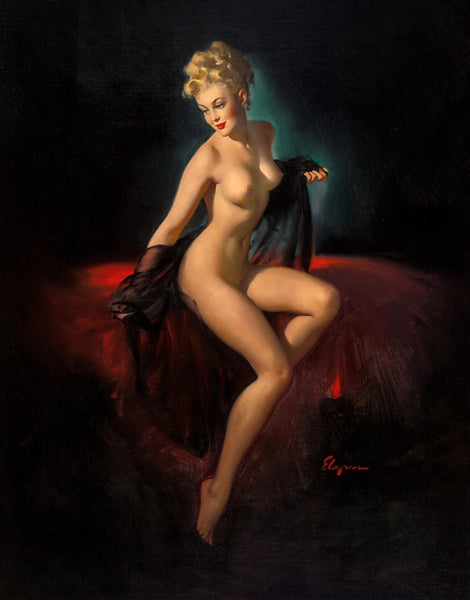
Vision Of Beauty Gil Elvgren (1947)
The first three pin-up models that Elvgren delivered to Brown and Bigelow in 1948 became the company's best-selling within weeks of their release. One of these, He Thinks I'm Too Good to Be True , was Elvgren's first non-nude pin-up subject to be published by Brown and Bigelow.
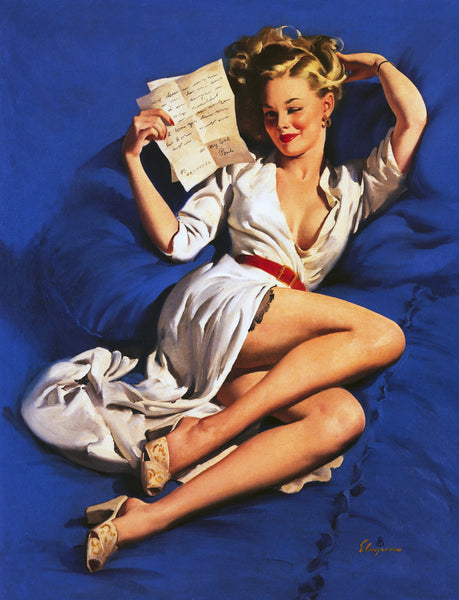
He Thinks I'm Too Good To Be True (1948)
Between 1948 and 1949, Elvgren introduced another innovation to the world of specialty advertising in the form of an Elvgren Girl who could be made like a letter opener . Brown and Bigelow made the sculpture from cream-colored plastic and packaged each letter opener in a collapsible container.
Brown and Bigelow had printed a special message on the packaging, to be read when the buyer opened the new Elvgren letter opener: "Yes, sir! When there is a job to be done, a service to be rendered or a need to be satisfy, we're ready to act. And when it's time to smile, we like to erase those wrinkles with something light, because working all the time without having fun is boring. So... here's Ellen, the letter opener. , a girl who will appeal to your "mail" instinct: when she opens your mail, let you remember us... she's a great girl. Designed by Elvgren. "

The Ellen Letter Opener (1949)
By the end of the decade, Elvgren was the most important artist Brown and Bigelow had under contract. During his short time with the company, he had painted half a dozen wildly successful images and created an innovative product that had never before been in their line.
In August 1949, Elvgren found himself with his work on the cover of a third national magazine, Pix. The topic, "Legs Are Big Business", was captioned "Calendar Artist Elvgren's Sexy Masterpieces Are Big Sellers" and featured model Candy Montgomery , who would later also pose for Elvgren's painting "Keeping Posted".
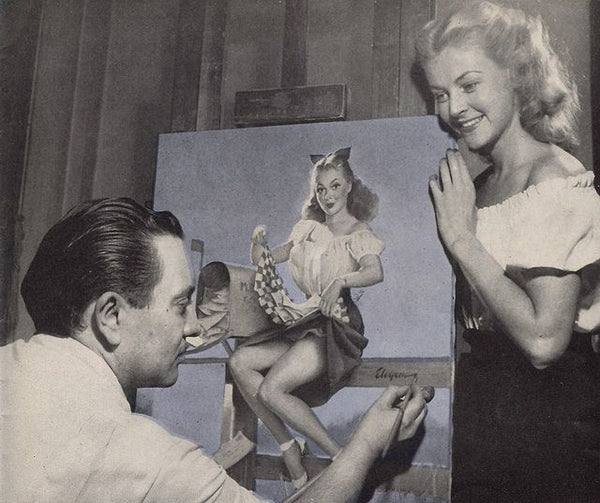
Candy Montgomery for Keeping Posted
Thanks to the phenomenal success of Elvgren's pin-ups , Brown and Bigelow garnered a steady stream of new clients. By 1950, the company had hundreds of new clients advertising specialty products bearing Elvgren images. The artist himself was also being approached by new companies and large advertising agencies who wanted to commission him for various commercial work. And, as before, there simply wasn't enough time to process even a fraction of the proposed work.
Some of the companies Elvgren has successfully broken into in the advertising industry include Coca-Cola, Orange Crush, Schlitz, Red Top Beer, Ovaltine, Royal Crown Soda, Campana Balm, General Tire, Sealy Mattress, Serta Perfect Sleep, Napa Auto Parts, Detzler Automotive Finishes, Frankfort Distilleries, Four Roses Blended Whiskey, General Electric Appliance and Pangburn's Chocolates.
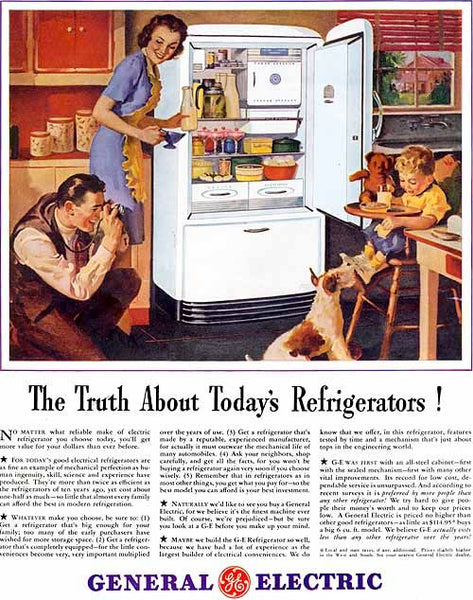
Advertising for General Electric
In 1951, Modern Man magazine reported on Elvgren and used as its cover photo Elvgren photographing model Candy Montgomery for the commission which would be titled " Keeping Posted ". In this report, Elvgren is referred to as "the greatest American painter of contemporary art". When asked what he thinks of American women, Elvgren responds that "they are infinitely more intelligent today. They are more beautiful than ever. They are more natural."
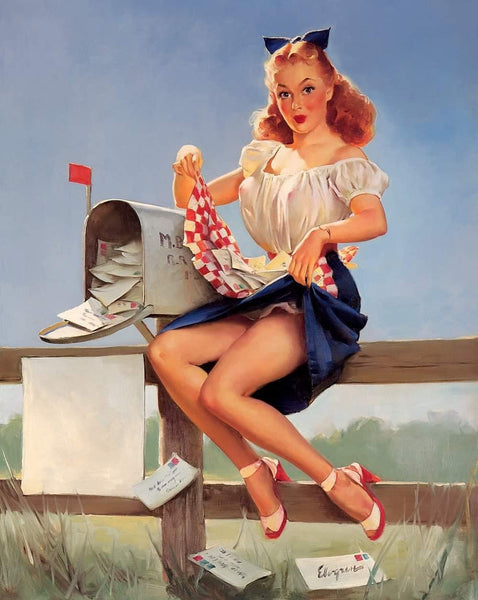
Keeping Posted (1951)
Gil also has wit. Not only in his situations which take a humorous turn, but even more in the ingenuity and inventiveness which he demonstrates in his colors, his poses, his gestures and everything that fits into a lively and exciting statement that captures everyone's attention. His work is sincere and very honest. The reaction to Gil's paintings is that she is a real girl. The carefully considered gestures and expressions are done with such mastery that they convey the exact meaning Gil intended without the phony quality that exists in such a large percentage of commercial painting. Gil has his finger on the pulse of today's evaluation of female beauty . This is a very important factor.
In the early 1950s, the Schmidt Lithograph Company of Chicago and San Francisco managed to hire Elvgren to paint a number of "universal billboards" for its various clients. The first painting Elvgren made for Schmidt was called Poolside Fun . It depicted a beautiful Elvgren girl drying her hair after a dip in the pool, while in the background a couple sitting poolside are served a beer by a butler. In the upper left corner, another Elvgren Girl stands on a diving board about to take the plunge. The entire scene is held together by Elvgren's perspective and brilliant composition.
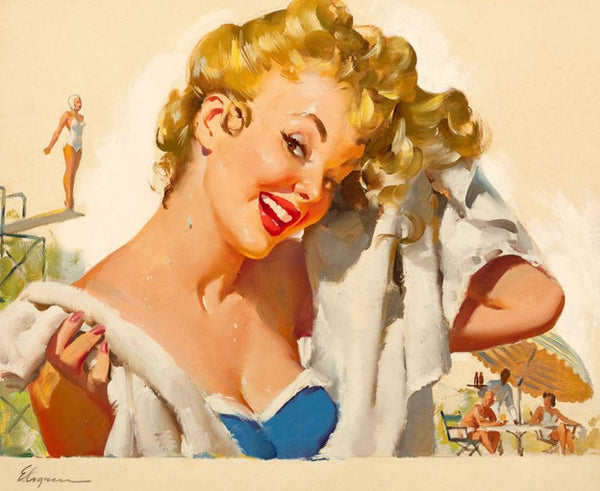
Poolside Fun
Elvgren's second work for Schmidt was a portrait of a smiling beauty holding a tray of beer bottles. The artist himself painted the title, " Pick of the Picnic ", directly onto the work. Most of Elvgren's work for Schmidt was executed on illustration boards measuring approximately 15 x 30 inches. In most cases, he used only the leftmost third of the plate for his image and left the rest of the plate blank for the advertising copy. Since then, these original paintings have sometimes been trimmed to eliminate the blank area, when a collector wanted to frame only the painting; however, there are a few die-hard collectors who insist on leaving the painting as it was originally created.
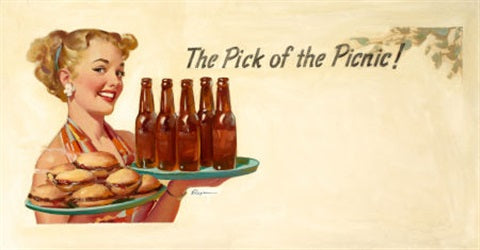
Pick of The Picnic
In January 1955, Charlie Ward asked Elvgren for a special nude painting that would be used for Brown and Bigelow's 1957 line. When Elvgren's painting of a sultry blonde was delivered to the company's headquarters, she was given the title of " Golden Beauty " and was then inventoried before being sent to Ward's office. To everyone's surprise, the painting then disappeared. It is published for the first time here. The story behind its disappearance is this: After keeping the painting in his home for several years, Ward gave it to Red Rudinski, head of the maintenance department at Brown and Bigelow and a longtime friend. Author of a book on safe burglary techniques, Rudinski ended up owing a St. Paul real estate mogul a big favor, and gave him the painting for Christmas. For the next thirty years, the painting remained in the real estate company's offices in downtown St. Paul, where it became something of a legend. Finally, it was acquired by an art collector in 1990 for a private collection.
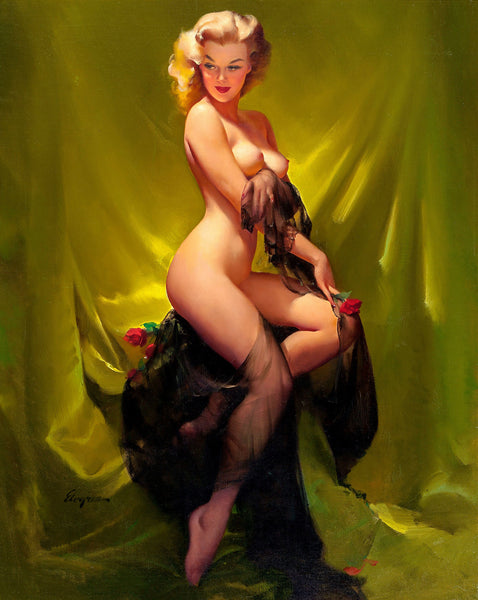
Golden Beauty (1957)
The middle years
To be continued...



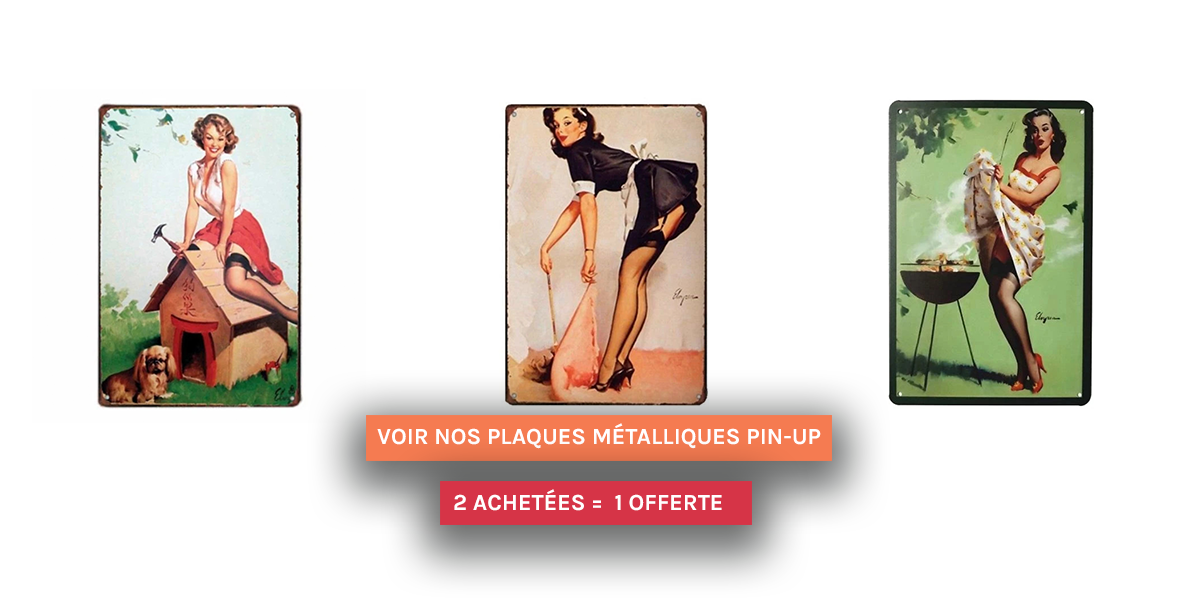






Leave a comment